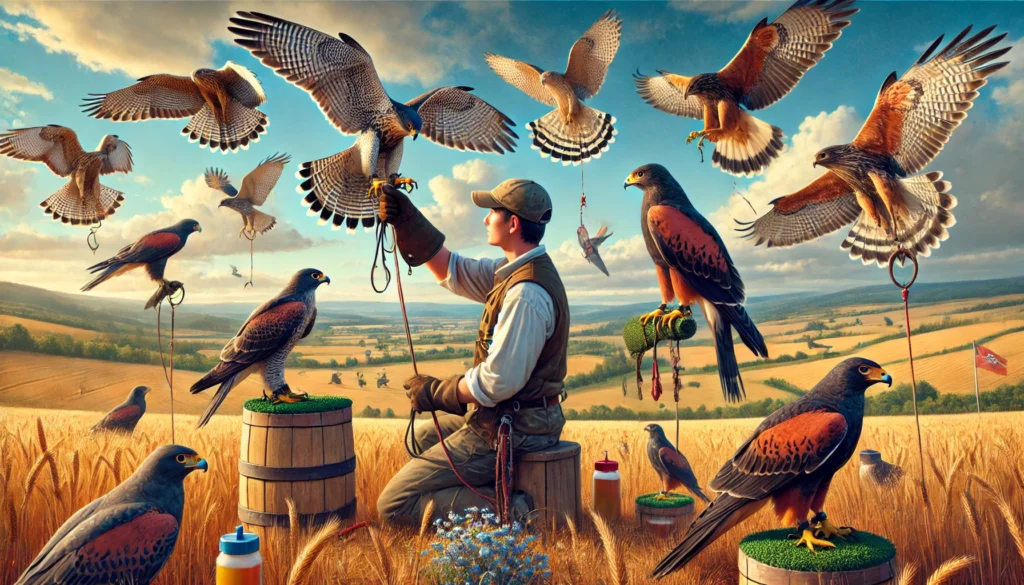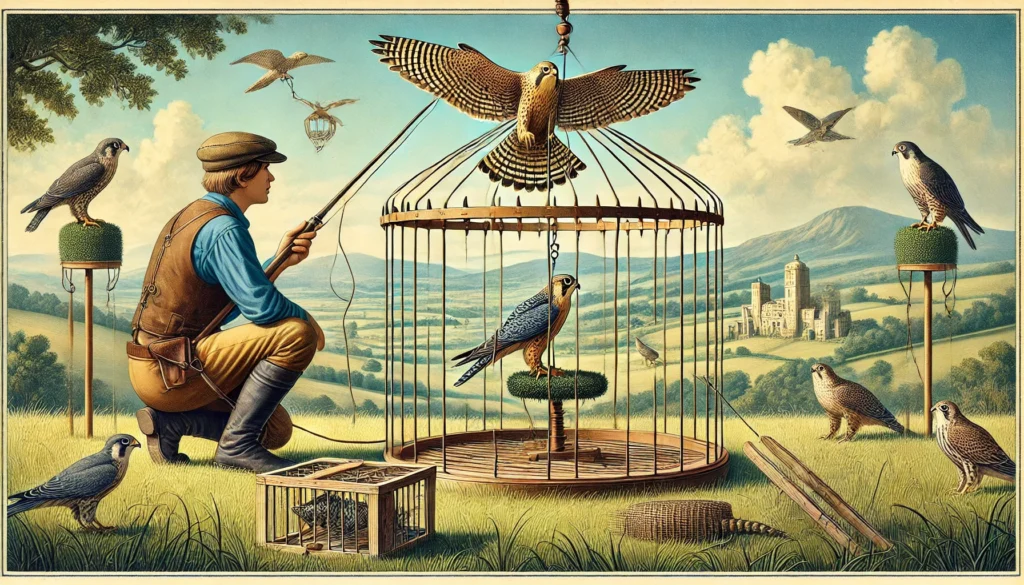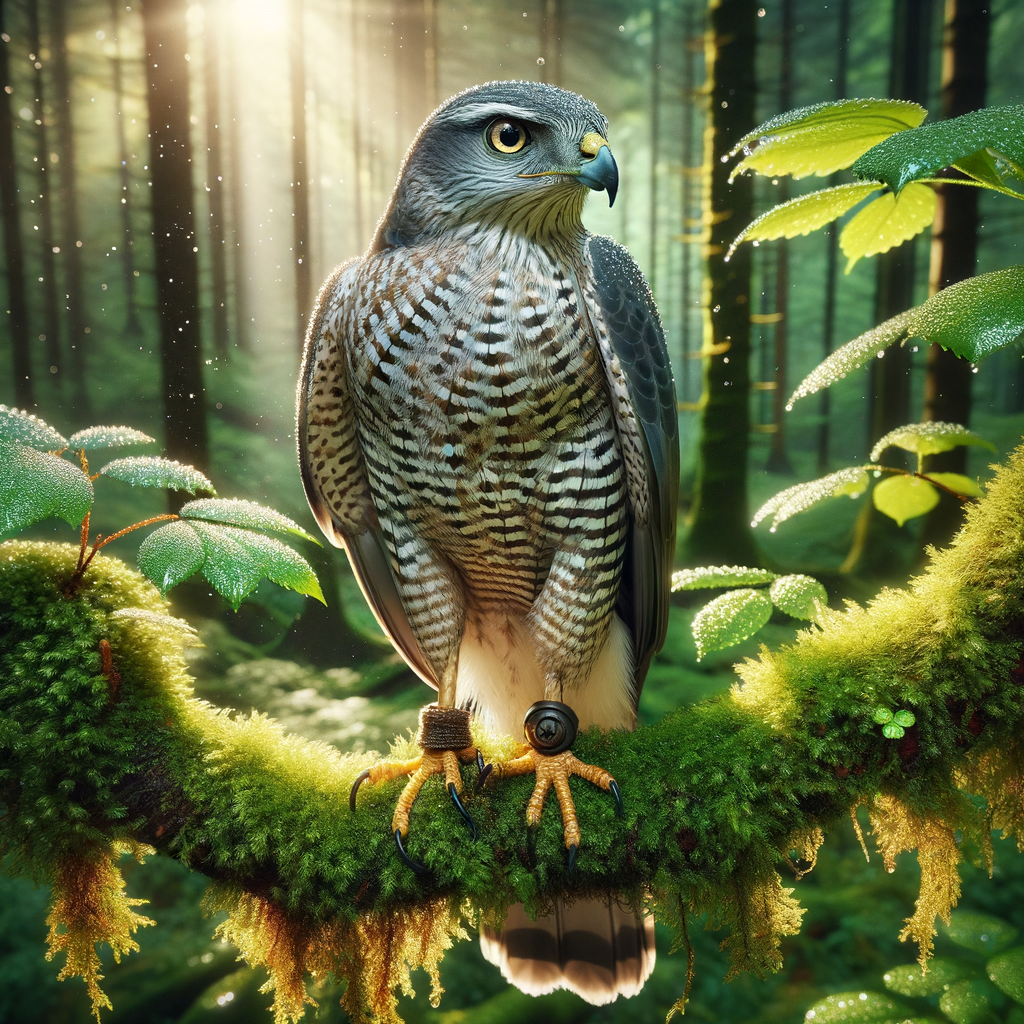Benefits of Falconry and the Role of Media
- Falconry is an ancient sport that involves training birds of prey to hunt.
- It fosters a strong bond between the falconer and the bird.
- Falcons can reach speeds of over 200 miles per hour when diving for prey.
- Media coverage has helped raise awareness about falconry and its cultural significance.
- Television shows and online platforms often feature falconry, sparking public interest.
- Learning falconry encourages patience, discipline, and a deep respect for nature.
- Itâs a unique way to connect with wildlife and understand predator-prey relationships.
- Preservation efforts for birds of prey are often highlighted through falconry media.
- Falconers must be knowledgeable about avian care, health, and ecology.
- There are strict regulations and ethical guidelines for practicing falconry.
- Engaging with falconry can be both a rewarding hobby and a professional pursuit.
Unveiling the Magic of Media and Falconry
Imagine you’re walking through the enchanting Irish countryside, a gentle breeze rustling the emerald-green grass. Now, picture a skilled falconer launching a majestic bird of prey into the sky, its wings slicing through the air with precision and grace. This magical connection between human and hawk mirrors an intriguing relationship we’re diving into today: the enchanting world of media and falconry.
At Learn Falconry, we believe in capturing the ancient art of falconry in all its majesty and sharing it with the world through the lens of media. This article will walk you through how media plays a pivotal role in preserving, promoting, and celebrating the age-old traditions of falconry. Itâs like the mythical Irish tale of the salmon of knowledge â once you grasp it, you unlock endless wisdom and wonder.
So, gather ’round, dear reader, and let us journey together into the skies where falcons soar, uncovering how media serves as our modern-day storyteller, bringing the splendor of falconry to life. Trust us, each twist and turn of this tale is as exhilarating as watching a hawk zero in on its prey. Dive in to discover just how deeply intertwined media and falconry truly are!
Falconry and Its Representation in Media
Falconry has always been a captivating subject that draws the interest of both historians and wildlife enthusiasts. Its rich heritage and majestic birds of prey have inspired countless forms of media to cover falconry in various ways. From ancient art to modern documentaries, ‘falconry in media’ has evolved tremendously over the years.
Falconry in Media: A Historical Perspective
Throughout history, falconry has been depicted in various forms of art and literature. Ancient tapestries, medieval manuscripts, and even Renaissance paintings often include scenes of noble falconers and their prized birds. This strong historical presence sets a rich backdrop for the falconry coverage in modern times. To dive deeper into the historical roots of falconry, you can explore our detailed article on the History of Falconry.
Modern Falconry in Media
Today’s world has seen a significant transformation in how falconry is portrayed through modern media. With advancements in technology and changing societal interests, the representation of falconry has moved beyond traditional art forms to include TV shows, films, and more. These modern portrayals have made falconry more accessible to a broader audience, showing not just the magnificence but also the practicality and training that goes into it. Learn more about Modern Falconryand its advances and sustainable practices.
Falconry Documentaries
One of the most notable types of ‘falconry coverage’ in media today is through documentaries. These films often provide an in-depth look at the life of falconers and their birds, showcasing training techniques, falcon health nutrition, and even the different species of falcons. Documentaries serve as an excellent educational tool, allowing viewers to appreciate the dedication and skill involved in this ancient practice. For aspirant falconers, starting with âfalconry documentariesâ provides a valuable introduction to the discipline. Interested in species-specific falcon care? Check out our sections on Training a Falcon and Falcon Health and Nutrition.
The Role of Technology in Falconry Coverage
As technology continues to advance, the intersection of ‘modern falconry in media’ sees the integration of stunning visual and digital tools to enhance storytelling. High-definition cameras, drones, and GPS trackers have allowed filmmakers to capture breathtaking footage of falcons in flight and during hunts, providing viewers with unparalleled views. To understand more about the innovative gear used in filming and tracking these majestic birds, visit our pages on Falconry Technology and GPS Telemetry for Falconry.
Educational and Cultural Significance
The educational value of ‘falconry documentaries’ cannot be overstated. They often touch upon the cultural significance of falconry in various societies, its role in conservation, and its modern adaptations. These documentaries offer an engaging way to learn about falconry’s global influence and its conservation efforts. Dive deeper into falconry’s cultural implications by exploring our articles on Falconry in Cultures and its vital role in Falconry and Conservation.
Through media, the ancient art of falconry continues to inspire and educate, preserving its traditions while embracing modern advancements. Whether you are a novice or a seasoned falconer, staying updated with ‘falconry coverage’ through various media can enrich your understanding and appreciation of this timeless practice.
Falconry in 2024: A Deep Dive into Its Modern Presence in Media
A Timeless Art
Falconry, the art of training falcons for hunting, dates back to around 2000 B.C. Today, it has morphed into a regulated activity that ensures the welfare and conservation of birds of prey. In 2024, falconry continues to captivate audiences, benefiting from media coverage and community engagement.
Licensing and Permits in Falconry
To become a licensed falconer, one must score at least 84 points on a 105-question exam. There are three classes of permits:
| Permit Class | Bird Ownership | Exam Required? | Apprenticeship? |
|---|---|---|---|
| Apprentice | 1 bird | Yes | 2 years |
| General | 2 birds | Yes | Transition from Apprentice |
| Master | 3 birds | Yes | 5 years as a General Class |
Regulation Changes
In 2024, regulations have been streamlined by organizations like the United States Fish and Wildlife Service (USFWS). These changes aim to simplify the permit process while preserving bird populations.
Conservation and Engagement
Falconers align with conservation principles to ensure the well-being of birds of prey. For instance, Acadia National Park closes certain hiking trails during peregrine falcon nesting season to protect these magnificent birds. Similarly, falconry has been proven by the USFWS Environmental Assessment to have no negative impact on wild populations, highlighting its potential for sustainable practice.
Education and Training
Becoming a falconer is no easy feat. Prospective falconers must find an experienced sponsor who can guide them through the process of passing state exams and meeting permit requirements. Educational resources such as the Falconry Archives and state-specific guides provide invaluable information for anyone interested in this ancient sport.
Falconry in Media
Real-Life Examples
- Adam Baz in Los Angeles: Adam Baz, a modern-day falconer, offers hands-on classes in Los Angeles, keeping the 4,000-year-old tradition alive.
Educational and Conservation Efforts
Falconry is also utilized for conservation efforts, such as controlling nuisance bird populations in industrial areas, proving more efficient than using traditional methods like guns.
Media and Falcoreny Services
Services related to falconry have expanded to include:
- Hands-on experiences
- Educational demonstrations
- Animal handling for film and photo shoots
- Falconry-based bird control
Documentaries and Community Engagement
Falconry documentaries continue to fascinate audiences. For example:
- The screening of “Overland” in April 2023, which included a talkback session.
- Ongoing falconry demonstrations tied to documentary events.
Falconry Statistics and Impact
Below is a summary of the impact and practices around falconry in 2024:
| Aspect | Description |
|---|---|
| Regulation Simplification | Efforts to merge federal and state permits for better clarity and compliance |
| Licenses Issued | High success rate among those who pass the rigorous exams and apprenticeship programs |
| Conservation Efforts | Positive impact on bird populations, supported by USFWS studies |
| Falconry in National Parks | Protected nesting sites and educational programs for park visitors |
| Community Engagement | Active involvement in public education through documentaries and hands-on experiences |
Falconry remains a fascinating blend of ancient tradition and modern practice, continuously enriched by regulations, media coverage, and community involvement.
Embracing Falconry in Modern Times: A Global Revival
Falconry is an ancient art, dating back to around 2000 B.C., now finding its place in today’s world through various media and practical applications. From regulation changes making it easier to become a falconer to modern-day practitioners like Adam Baz who offer hands-on experiences in Los Angeles, falconry is steadily gaining attention. These modern falconers continue to uphold conservation principles and follow stringent regulations to ensure the welfare of the birds.
Falconry has proven itself not only a historical practice but also a valuable tool for conservation and education. Organizations and resources provide extensive guides, training, and examinations to ensure the tradition carries on responsibly. Falconry has been featured in documentaries, news articles, podcasts, and even music videos, showcasing its fascinating aspects and the dedicated individuals involved in the practice. Recent documentaries and community screenings like “Overland” highlight falconry’s rich history and modern evolution, allowing more people to appreciate this unique tradition.
In summary, as we’re looking towards the future, it’s heartening to see falconry being celebrated and preserved through proactive education and media representation. This remarkable tradition continues to captivate audiences, offering a blend of history, wildlife conservation, and hands-on engagement that is as relevant today as ever. The vibrant global falconry community remains committed to ensuring that this ancient art thrives well into the future.
Common Questions About Media and Falconry
-
How is falconry portrayed in the media?
Falconry has been featured in various forms of media, including movies, TV shows, and books. These portrayals often highlight the bond between the falconer and the bird, as well as the skill and tradition involved in the practice. However, some representations can be exaggerated or romanticized. For an accurate historical perspective, you can explore our history of falconry page. -
What are some famous falconers depicted in media?
There are several well-known falconers who have been featured in books, documentaries, and even film. One such figure is historical figures in falconry, who are renowned for their contributions to the tradition. You can also read about modern falconry icons who have made a significant impact on the sport today. -
How accurate are the falconry techniques shown in movies and TV shows?
While some movies and TV shows strive for authenticity, others may take creative liberties for dramatic effect. If you’re curious about how real falconry techniques work, check out our guides on basic falconry techniques. For those interested in more advanced methods, our advanced training methods page offers deeper insights. -
Is technology used in modern falconry?
Yes, technology plays a significant role in modern falconry. From GPS trackers to health monitoring devices, falconers use advanced tools to ensure the safety and well-being of their birds. Learn more about these innovations on our innovations in falconry technology page. -
Are there any documentaries or series focused on falconry?
There are multiple documentaries and series dedicated to exploring the world of falconry. These films cover various aspects, from training techniques to the conservation efforts supported by falconry. For a deeper dive, our page on media and falconry provides a curated list of recommended viewing. -
How can I learn falconry if I’m just starting out?
If you’re new to falconry and want to learn more, starting with the basics is crucial. Our falconry for beginners section is packed with valuable information on getting started, choosing your first falcon, and understanding basic equipment. For a comprehensive guide, read our article on getting started in falconry.



